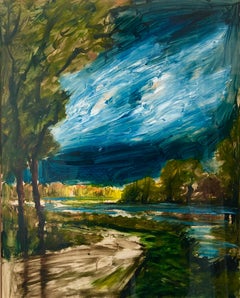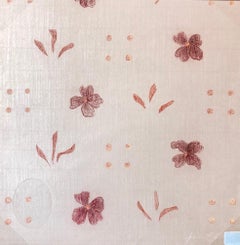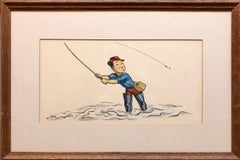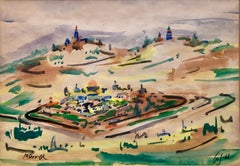Lions Gallery Landscape Drawings and Watercolors
20th Century Modern Landscape Paintings
Gouache
21st Century and Contemporary Pop Art Landscape Drawings and Watercolors
Pastel, Archival Paper
1930s American Modern Figurative Drawings and Watercolors
India Ink, Watercolor, Illustration Board
20th Century Modern Interior Drawings and Watercolors
Paper, Watercolor
1960s Modern Landscape Drawings and Watercolors
Paper, Carbon Pencil
Mid-20th Century Modern Landscape Drawings and Watercolors
Paper, Watercolor
1940s Expressionist Landscape Drawings and Watercolors
Paper, Watercolor
1960s Modern Landscape Drawings and Watercolors
Watercolor
1960s Modern Landscape Drawings and Watercolors
Watercolor
20th Century Modern Landscape Drawings and Watercolors
Watercolor
20th Century Modern Landscape Drawings and Watercolors
Paper, Watercolor
Early 20th Century Post-Impressionist Landscape Paintings
Paper, Oil Pastel
Mid-20th Century Modern Landscape Paintings
Watercolor
20th Century Modern Landscape Drawings and Watercolors
Gouache, Paper, Watercolor
Mid-20th Century Expressionist Landscape Paintings
Watercolor, Board
Mid-20th Century Abstract Expressionist Abstract Drawings and Watercolors
Paper, Oil Pastel
20th Century Expressionist Landscape Drawings and Watercolors
Paper, Oil Pastel, Pastel
1930s Naturalistic Figurative Drawings and Watercolors
Archival Ink, Watercolor, Illustration Board
1930s Naturalistic Figurative Drawings and Watercolors
Archival Ink, Watercolor, Illustration Board
1930s American Modern Figurative Drawings and Watercolors
India Ink, Watercolor, Illustration Board
Mid-20th Century Modern Landscape Drawings and Watercolors
Paper, Watercolor
Mid-20th Century American Modern Figurative Drawings and Watercolors
Watercolor
20th Century Impressionist Landscape Drawings and Watercolors
Watercolor, Lithograph
1940s Modern Landscape Drawings and Watercolors
Watercolor
20th Century Modern Landscape Drawings and Watercolors
Watercolor
20th Century Landscape Drawings and Watercolors
Watercolor
20th Century Modern Landscape Drawings and Watercolors
Watercolor
20th Century Landscape Drawings and Watercolors
Watercolor
21st Century and Contemporary Pop Art Landscape Drawings and Watercolors
Pastel, Archival Paper
20th Century Landscape Drawings and Watercolors
Watercolor
20th Century Modern Landscape Drawings and Watercolors
Watercolor
20th Century Modern Landscape Drawings and Watercolors
Watercolor
20th Century Post-Impressionist Landscape Drawings and Watercolors
Watercolor
20th Century Post-Impressionist Landscape Drawings and Watercolors
Watercolor
1970s Realist Landscape Drawings and Watercolors
Watercolor
20th Century Landscape Drawings and Watercolors
Watercolor, Archival Paper
20th Century Modern Landscape Drawings and Watercolors
Acrylic Polymer, Pastel
20th Century Modern Landscape Drawings and Watercolors
Pastel, Tempera
20th Century Modern Figurative Drawings and Watercolors
Pastel
1980s Expressionist Figurative Paintings
Watercolor, Gouache, Archival Paper
19th Century Naturalistic Landscape Drawings and Watercolors
Watercolor
19th Century Naturalistic Landscape Drawings and Watercolors
Watercolor
Early 1900s Naturalistic Landscape Drawings and Watercolors
Watercolor
1980s Post-Impressionist Landscape Paintings
Pastel
1940s Expressionist Landscape Drawings and Watercolors
Paper, Watercolor
20th Century American Modern Abstract Drawings and Watercolors
Watercolor, Archival Paper
20th Century American Modern Abstract Drawings and Watercolors
Watercolor, Archival Paper
20th Century American Modern Abstract Drawings and Watercolors
Watercolor, Archival Paper
Mid-20th Century American Modern Figurative Drawings and Watercolors
Paper, Watercolor
20th Century Modern Landscape Drawings and Watercolors
Lithograph, Watercolor
20th Century Modern Landscape Drawings and Watercolors
Watercolor, Lithograph
20th Century Modern Landscape Drawings and Watercolors
Watercolor, Lithograph
Mid-20th Century Expressionist Landscape Drawings and Watercolors
Pastel, Ink, Watercolor
1970s Modern Landscape Drawings and Watercolors
Lithograph
1970s Modern Landscape Drawings and Watercolors
Lithograph
1970s Modern Landscape Drawings and Watercolors
Lithograph
1970s Modern Landscape Drawings and Watercolors
Lithograph
1970s Modern Landscape Drawings and Watercolors
Lithograph
1970s Modern Landscape Drawings and Watercolors
Lithograph
1970s Modern Landscape Drawings and Watercolors
Lithograph





